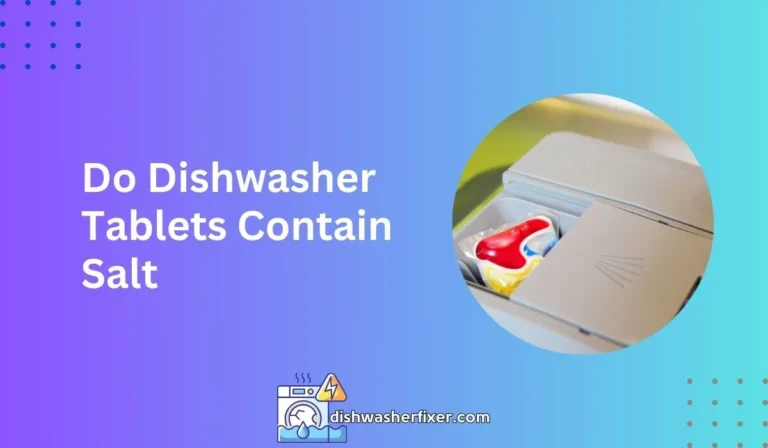How to Install Bosch Dishwasher: Quick & Easy Guide
To install a Bosch dishwasher, first secure the mounting brackets. Connect water, drain, and power lines, ensuring they’re properly aligned and leak-free. Slide the dishwasher into place, level it, and fasten it to the countertop or sides. Lastly, check for proper operation.
Pre-Installation Preparation

Measure the Installation Space for Compatibility
Before installing your Bosch dishwasher, it is crucial to ensure that the space allocated for the appliance is suitable. Start by measuring the height, width, and depth of the installation area.
Compare these measurements with the dimensions provided in the Bosch installation manual.
Remember, a perfect fit is necessary to avoid any complications during the installation process. Ensure there’s enough room for not just the dishwasher, but also for door opening and the various connections at the back.
Gather Necessary Tools and Materials
Having the right tools at hand is key to a smooth installation process. You’ll need an adjustable wrench, screwdrivers, a level, pliers, a utility knife, and perhaps a drill with the right hole saw for a ceiling box if you’re routing wires through cabinetry.
Read Through the Manufacturer’s Installation Instructions
The manufacturer’s installation instructions are your roadmap to a successful installation. Bosch dishwashers come with a detailed manual that outlines specific requirements and steps.
Take the time to read through these instructions thoroughly before beginning the installation process. This will acquaint you with the procedure and help identify any additional tools or parts you might need.
Turn Off the Water Supply and Power to the Installation Area
Safety first! Before removing an existing dishwasher or installing a new one, turn off the water supply and disconnect the power to the installation area.
This step is essential to prevent any accidents involving water or electricity. Locate the shutoff valve for the water supply, typically found under the sink, and flip the circuit breaker to cut the power.
Remove the Old Dishwasher if Replacing
If you’re replacing an old dishwasher, carefully disconnect and remove it. Start by unscrewing the mounting brackets that secure the dishwasher to the countertop.
Afterward, slowly pull out the appliance, being mindful of the water and power connections still attached at the back. Detach these connections, ensuring to keep towels handy for any residual water that may spill out.
Installing the Bosch Dishwasher

Unpack the Dishwasher and Inspect for Damage
Once the old dishwasher is out or the space is cleared, unbox your new Bosch dishwasher.
Review the packaging list to ensure all parts are present. Inspect the appliance for any visible damage that may have occurred during shipping.
If any issues are found, contact the retailer or manufacturer before proceeding with the installation.
Adjust the Leveling Feet for Proper Height and Balance
Before sliding the dishwasher into place, adjust its leveling feet. This ensures that the dishwasher is at the appropriate height and is balanced.
An unlevel dishwasher can lead to improper operation or water leaks. Use a level to confirm that the appliance is even horizontally and vertically, making adjustments to the feet as necessary.
Slide the Dishwasher into Place, Ensuring It Is Level and Flush with Cabinetry
Carefully slide the dishwasher into the installation space. Check that it sits flush with the surrounding cabinetry and that the front of the appliance is aligned with the cabinet fronts.
Use a level again to confirm that the dishwasher remains level once in place. This precision ensures optimal performance and appearance.
Secure the Dishwasher to the Countertop or Sides of the Cabinets
Once the dishwasher is correctly positioned, secure it in place. This usually involves attaching the provided mounting brackets to the underside of the countertop or to the sides of the cabinets.
This step is critical to prevent the dishwasher from tipping forward when the door is opened and loaded with dishes.
Connect the Water Supply Line to the Dishwasher’s Water Valve
Using the appropriate fittings, connect the water supply line to the dishwasher’s water inlet valve.
Ensure that the connection is tight and secure to avoid any potential water leaks. Wrap the threads of the valve with Teflon tape to create a watertight seal.
Attach the Drain Hose to the Sink Drain or Garbage Disposal
The drain hose should be attached to the sink drain or the garbage disposal unit. Ensure that the hose is clamped firmly in place and that there are no kinks or bends that could obstruct water flow.
It’s also important to establish a high loop in the drain hose under the sink to prevent sink water from siphoning back into the dishwasher.
Route and Connect the Electrical Wiring
Electrical connections should be made according to the Bosch installation manual and local electrical codes.
Typically, this involves connecting the dishwasher’s wiring to the power supply using wire nuts and ensuring that the connections are secure.
If you’re not comfortable with electrical work, this is a step best left to a professional electrician.
Post-Installation Checks and Testing

Turn on the Water Supply and Check for Leaks at All Connections
With the dishwasher installed, turn the water supply back on and inspect all connections for leaks.
A careful examination at this stage can prevent water damage and ensure that the installation is secure. Tighten any fittings as necessary to stop drips or seepage.
Restore the Power Supply to the Dishwasher
After verifying that the water connections are leak-free, restore power to the dishwasher by flipping the circuit breaker back on. It’s time to give the appliance its first electrical test.
Run the Dishwasher Through a Test Cycle to Ensure Proper Operation
Before loading your dishes, run the dishwasher through a test cycle. This helps verify that all functions are working correctly.
Watch for proper water fill, spray arm movement, and drainage during the cycle. If any issues arise, refer to the Bosch manual’s troubleshooting section or contact customer support for assistance.
Check the Alignment of the Dishwasher Door and Adjust if Necessary
After the test cycle, check the alignment of the dishwasher door. If it’s not even or if it doesn’t close properly, adjust the leveling feet slightly to correct the issue. A well-aligned door ensures a tight seal and optimal dishwasher performance.
Install the Kickplate or Toe Panel
The final cosmetic touch to your dishwasher installation is attaching the kickplate or toe panel.
This component covers the space beneath the dishwasher door and provides a clean look while protecting the unit’s wiring and connections.
Align the kickplate with the bottom of the dishwasher and secure it with the screws provided.
Review and Finalize All Installation Details per the Bosch Installation Manual
Finally, review the entire installation process to ensure that each step has been completed according to the Bosch manual.
Confirm that all tools and materials have been removed from the work area and that the dishwasher is ready for regular use. With these steps complete, you can enjoy the convenience and efficiency of your new Bosch dishwasher.
FAQs About Installing a Bosch Dishwasher
What do I need to do before installing a Bosch dishwasher?
Before installing a Bosch dishwasher, ensure you have all necessary tools, the power is off, and the space is prepared. You also need to check that the water, drain, and power lines are available and accessible.
How do I secure the dishwasher to prevent it from tipping?
To prevent tipping, secure the mounting brackets to the sides of the dishwasher or the underside of the countertop as per the installation instructions.
How do I connect the water line to a Bosch dishwasher?
Connect the water supply line to the dishwasher’s water valve, usually located on the bottom left side, and ensure it is tight and leak-free.
What is the correct way to connect the drain line?
Attach the drain hose to the dishwasher’s drain pump, and if necessary, route it through an air gap before connecting it to the sink drain or garbage disposal to prevent backflow.
How do I ensure the Bosch dishwasher is properly leveled?
Adjust the dishwasher’s feet to level the appliance from front to back and side to side, ensuring that the dishwasher is stable and the door can close properly.
Final Thoughts
Installing a Bosch dishwasher requires attention to detail. Begin by securing the mounting brackets. Carefully connect the water supply, drainage, and electrical lines, checking for any leaks.
Once connected, slide the dishwasher into its designated spot, ensuring it is level. Secure it to the countertop or cabinetry, and then perform a test run to confirm everything operates as expected.





